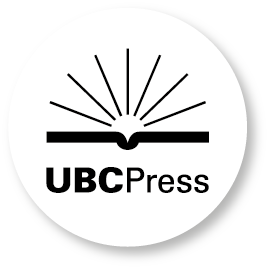
360 pages, 6 x 9
10 b&w illustrations, 3 tables
Paperback
Release Date:04 Nov 2025
ISBN:9780816553112
Hardcover
Release Date:04 Nov 2025
ISBN:9780816555635
Mother Tongues of the High Andes
Gender, Language, and Indigenous Difference in Peru
The University of Arizona Press
The Peruvian altiplano, a high plateau around Lake Titicaca, is known for its breathtaking landscapes and the cultivation of commodities like quinoa and alpaca wool. The region also stands out for its history of inter-Indigenous language contact and multilingualism between Quechua- and Aymara-speaking communities. This linguistic ecology predates the Spanish conquest and persists today, making the altiplano, with its capital, Puno, a unique space where Indigenous multiplicity is recognized and celebrated. Yet this celebration is accompanied by additional ideological challenges around defining Quechua and Aymara as distinct Indigenous languages and ethnic groups.
Anthropologist Sandhya Krittika Narayanan begins with these challenges, and asks: What does it mean to be a Quechua or Aymara speaker in Puno today? What does it mean to be an Indigenous ethnic Quechua or Aymara individual?
Mother Tongues of the High Andes opens with these questions, exploring what Quechua and Aymara languages and identities mean for Indigenous puneños as they navigate their past and present. Narayanan argues that understanding inter-Indigenous linguistic and social differences involves examining Indigenous gender roles, responsibilities, and linguistic practices, particularly those of Indigenous puneña women. She shows how these practices have contributed to the maintenance of Indigenous multilingualism and continuity in local modes of understanding Indigenous identity and difference.
Even as ideologies around Indigenous identity and linguistic practices shift due to global discourses on Indigenous ethnic identity and nationalism, Indigenous women continue to play a crucial role, promoting new ways to speak and think about Quechua and Aymara linguistic differences, making the Indigenous roots and histories of Puno recognizable to a global audience. Through a comprehensive ethnographic exploration of gender, language, and Indigenous difference, Narayanan shows how the linguistic and social practices of Indigenous puneña women both contest and reaffirm competing visions of Quechua and Aymara linguistic identity and authority.
Anthropologist Sandhya Krittika Narayanan begins with these challenges, and asks: What does it mean to be a Quechua or Aymara speaker in Puno today? What does it mean to be an Indigenous ethnic Quechua or Aymara individual?
Mother Tongues of the High Andes opens with these questions, exploring what Quechua and Aymara languages and identities mean for Indigenous puneños as they navigate their past and present. Narayanan argues that understanding inter-Indigenous linguistic and social differences involves examining Indigenous gender roles, responsibilities, and linguistic practices, particularly those of Indigenous puneña women. She shows how these practices have contributed to the maintenance of Indigenous multilingualism and continuity in local modes of understanding Indigenous identity and difference.
Even as ideologies around Indigenous identity and linguistic practices shift due to global discourses on Indigenous ethnic identity and nationalism, Indigenous women continue to play a crucial role, promoting new ways to speak and think about Quechua and Aymara linguistic differences, making the Indigenous roots and histories of Puno recognizable to a global audience. Through a comprehensive ethnographic exploration of gender, language, and Indigenous difference, Narayanan shows how the linguistic and social practices of Indigenous puneña women both contest and reaffirm competing visions of Quechua and Aymara linguistic identity and authority.
Subtle and sophisticated, this ethnography is a heartfelt song to the Indigenous women whose multilingual virtuosity maintains the vibrancy of Quechua and Aymara in an ecology of inter-Indigenous multilingualism in southern Peru. Narayanan traces the lived experiences and ideologies that animate gendered Indigenous figures of personhood, from brides, wives, and mythical mothers to market vendors and beauty pageant contestants. She knits together perspectives from media, schools, and folklore festivals with the speaking, listening, and literacy practices of ordinary citizens to reveal the identity work of Indigenous mother tongues.’—Kristina Wirtz, author of Performing Afro-Cuba
‘Advancing theory on multilingualism, gender, and identity, Mother Tongues of the High Andes explores how Indigenous women and ideologies concerning Indigenous femininity shape what it means to be and to speak Quechua and Aymara in the Peruvian altiplano today. Narayanan’s expansive ethnography transports readers from bustling weekday urban markets in Puno to the annual celebration of the altiplano’s mythical founding on the shores of Lake Titicaca, from Indigenous-language radio programming to Indigenous beauty pageants. This carefully researched volume will be essential reading for scholars of language contact, Indigenous identity formation, and the contemporary Andes.’—Jennifer Guzmán, SUNY Geneseo
‘From market stalls to Indigenous beauty pageants, Mother Tongues of the High Andes presents a vibrant ethnography of Andean women’s language use and performance in the multilingual contact zone of Puno, Peru. Sandhya Narayanan adeptly illuminates the processes through which social actors forge intersectional identities in their ways of speaking and conceptualizing multiple languages. This trenchant analysis provides valuable tools for rethinking the intimate relations among indigeneity, gender, and place in communicative practices that are shaped by colonial histories but continually enacted and imagined in new ways. It’s a highly teachable book that will spark thoughtful discussions at both undergraduate and graduate levels.’—Amanda Minks, author of Indigenous Audibilities: Music, Heritage, and Collections in the Americas
Sandhya Krittika Narayanan is an assistant professor of anthropology at the University of Nevada, Reno.











